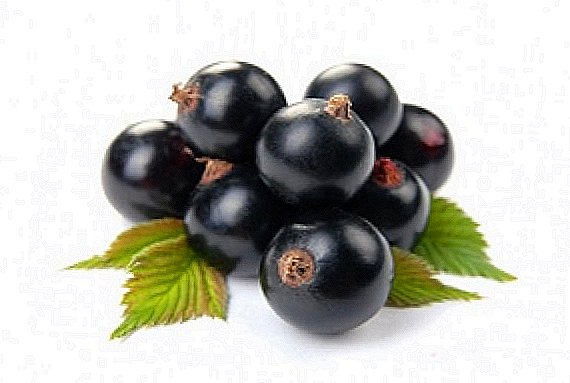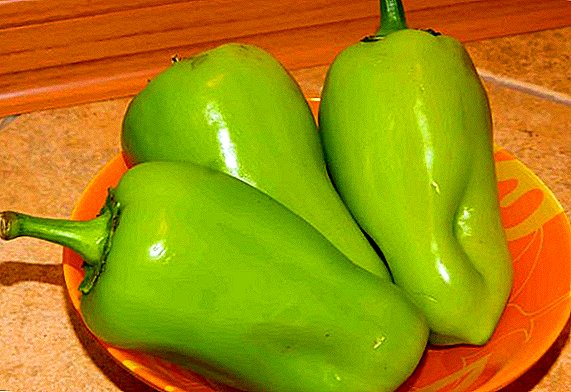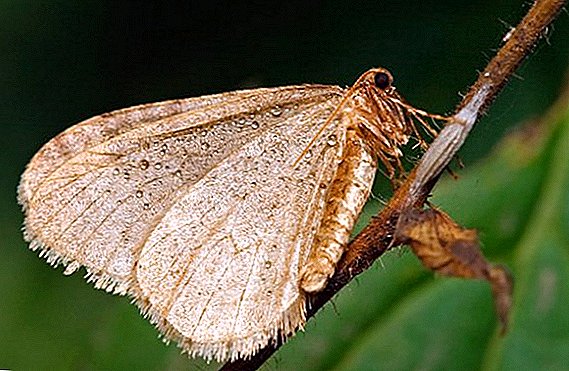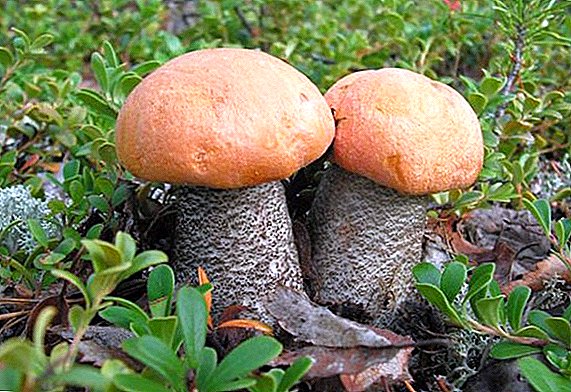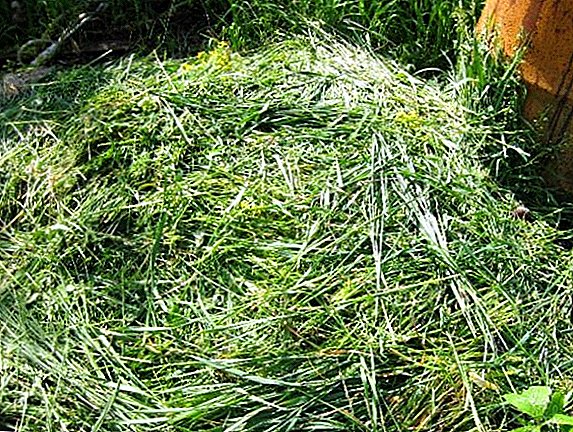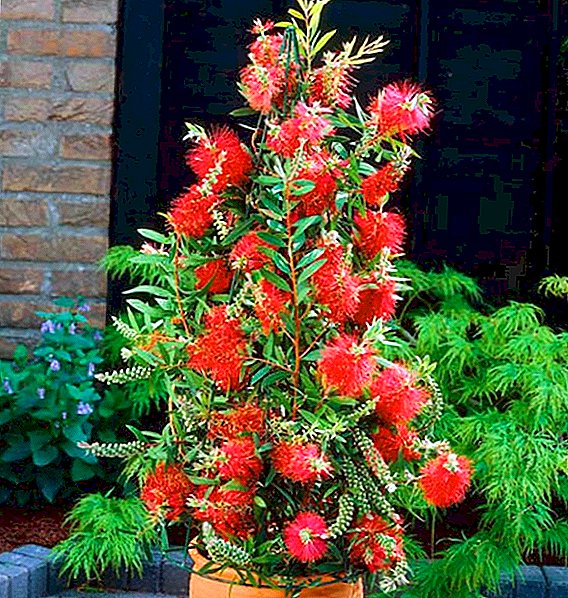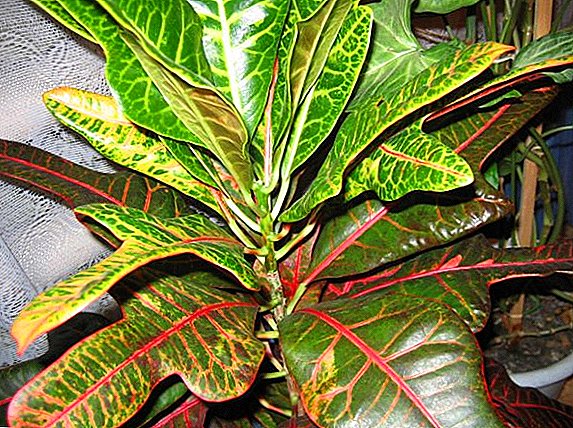 Croton is a popular house plant due to its original leaves with various colors. Codiaeum, that is, the same Croton, is a scientific name that means “head” in Greek. The name comes from the city in Italy, which means in a simple language "shrub". The name Croton had to be more liked by gardeners. In this article you will find all the recommendations about planting plants.
Croton is a popular house plant due to its original leaves with various colors. Codiaeum, that is, the same Croton, is a scientific name that means “head” in Greek. The name comes from the city in Italy, which means in a simple language "shrub". The name Croton had to be more liked by gardeners. In this article you will find all the recommendations about planting plants.
Did you know? Croton is most successfully used in homeopathy. Its preparations are indicated for all malignant infectious diseases with bleeding and severe loss of strength.
Croton: plant description
 Croton is a representative of the family of Molochai. Whatever the beautiful Croton plant, it is poisonous. The milky juice, which is contained in Croton, is rich in a variety of poisonous substances. It was used in ancient Egypt, Greece and Rome. Milky juice was collected there and used as a panacea for calluses, freckles, warts, and bites of rabid animals. Dust, which is also released when the stems and leaves break, caused inflammation of the mucous membranes, sneezing and blisters on the skin. Croton's chemical composition includes triglyceride oleic, myristic and linoleic acids. The seeds contain toxalbumin and toxic resin. The milky juice causes a burning sensation on the skin, and if it gets into the eyes, it is temporary blindness. It is better to protect animals from this plant, as it may be harmful. If the pet cracks a leaf or a branch, the plant will immediately release a protective milky juice before the animal moves away.
Croton is a representative of the family of Molochai. Whatever the beautiful Croton plant, it is poisonous. The milky juice, which is contained in Croton, is rich in a variety of poisonous substances. It was used in ancient Egypt, Greece and Rome. Milky juice was collected there and used as a panacea for calluses, freckles, warts, and bites of rabid animals. Dust, which is also released when the stems and leaves break, caused inflammation of the mucous membranes, sneezing and blisters on the skin. Croton's chemical composition includes triglyceride oleic, myristic and linoleic acids. The seeds contain toxalbumin and toxic resin. The milky juice causes a burning sensation on the skin, and if it gets into the eyes, it is temporary blindness. It is better to protect animals from this plant, as it may be harmful. If the pet cracks a leaf or a branch, the plant will immediately release a protective milky juice before the animal moves away.
In our forests, Croton is called "demon milk." The plant can be recognized by the branching stalk and opposite lanceolate leaves. Inflorescences are collected in the "umbrella" and have a lemon-yellow color. Milky juice is white. The islands of the Pacific Ocean and India are considered the birthplace of Croton. In room culture most often grown plant hybrids. In some countries it is grown at home, because they believe that it protects the home and protects the house from negative energy.
How to choose croton when buying
 The croton houseplant can not only be grown from seed, but also purchased at any garden hypermarket. Before buying a plant, you need to carefully inspect the plant, as it is often damaged by spider mites, scutes, and mealybugs. If you notice some parasites on a new plant, it is better not to buy it. First of all, you need to inspect the underside of the leaves and sinuses for the presence of spider webs, bites or plaque. If this is not - the plant can be bought.
The croton houseplant can not only be grown from seed, but also purchased at any garden hypermarket. Before buying a plant, you need to carefully inspect the plant, as it is often damaged by spider mites, scutes, and mealybugs. If you notice some parasites on a new plant, it is better not to buy it. First of all, you need to inspect the underside of the leaves and sinuses for the presence of spider webs, bites or plaque. If this is not - the plant can be bought.
When choosing croton pay attention to the leaves of the plant were shiny and bright. If the flower has a bare trunk, you should check with the seller for what reason it does not have most of the leaves. The most common cause is improper care. The flower can be put in order, if after the purchase properly care for him. If the leaves curl - this is a signal that the plant may be infected with parasites. After buying the flower is better to keep away from other plants for 30 days. If you listened to these tips and chose a healthy plant, then it will delight you with its decorative look.
How to plant Croton at home
If you decide to grow croton, you need to know a few nuances for the proper development of the plant.
Did you know? Croton is able to optimize the workplace environment for conducting successful negotiations, protects the owner from the negative of unauthorized people.
Where to place Croton: the choice of location and lighting
 Croton needs to provide a sunny place. The amount of light depends on the color of its leaves. The plant is not afraid of direct sunlight, so you can place the flower directly on the window sill and not create a diffused light. The window should face east or west. You also need to monitor the plant after purchase, as Croton should get used to the new place. If he likes a place, the crown will acquire a unique color, and if, on the contrary, it will not have enough light, the leaves will be ordinary, that is, green. In winter, it is better to expose the plant under the direct rays of the sun, and in the spring you should avoid them.
Croton needs to provide a sunny place. The amount of light depends on the color of its leaves. The plant is not afraid of direct sunlight, so you can place the flower directly on the window sill and not create a diffused light. The window should face east or west. You also need to monitor the plant after purchase, as Croton should get used to the new place. If he likes a place, the crown will acquire a unique color, and if, on the contrary, it will not have enough light, the leaves will be ordinary, that is, green. In winter, it is better to expose the plant under the direct rays of the sun, and in the spring you should avoid them.
Requirements for temperature and humidity
The optimum temperature for croton in the summer should be 30 ° C. In winter, it is better to adhere to 13 ° C, as he does not like to reduce the temperature, especially long. With a sharp drop in temperature below 10 ° C, the leaves will begin to fall off, so it is better to put it closer to the battery. As for humidity, Croton loves dry room air, namely 80%. In summer, the air humidity should rise, therefore the plant should be sprayed with distilled water often. In winter, when the temperature drops, it is better not to touch the flower and just water it.
What should be the soil for planting
 Croton loves fertile and weakly acidic soil mixtures. You can do it yourself. The garden mixture, peat and sand are taken and mixed in a ratio of 2: 1: 1. You can also add leaf earth, and for adult plants, this component increases. Before planting, the soil must be watered with a weak solution of potassium permanganate. After the mixture is dry, you can begin transplanting.
Croton loves fertile and weakly acidic soil mixtures. You can do it yourself. The garden mixture, peat and sand are taken and mixed in a ratio of 2: 1: 1. You can also add leaf earth, and for adult plants, this component increases. Before planting, the soil must be watered with a weak solution of potassium permanganate. After the mixture is dry, you can begin transplanting.
How to choose a croton pot
The croton flowerpot should be normal and the size of a plant's root system. This is important, because if you choose a pot for a plant that is too big, you can pour it. An ordinary plastic pot will fit, from which it will be more convenient for you to transfer Croton to another pot.
Transplanting plant purchased
At the bottom of the pot you need to lay expanded clay. He must fill the pot into ¼ part. Then you need to carefully get an earthen ball out of the pot. If you see that the surface of the coma is covered with roots, you need to carefully transfer the plant to a new, slightly larger pot. If the roots are covered with earth and there are not very many of them, then the plant should be transplanted into a pot that fits Croton in size. You can also add a little root, for example, "August". These fertilizers are long acting. When adding such dressings, the root system will crawl through the holes in the bottom of the pot, so it is best not to add water to the pan.
Croton care at home
A plant like Croton is unpretentious, but you need to know how to properly care for it so that the flower develops quickly and pleases the eye with its color.
How to water the plant
Croton can be watered, sprayed and even washed, but this should be done at least once a week. In spring and autumn it is necessary to water the plant every day or every other day.
Important! In the interval between waterings make sure that the soil dries out a little.
Before you start watering Croton, you need to warm up a little water, as the plant does not like the cold. It is necessary to water only with warm boiled water. You can also just spray the plant. In winter, a single watering in 2-3 days will be enough for a flower.
Features of Croton feeding
 For a whole year, Croton should be fertilized with mineral and organic supplements. In spring and autumn, the plant should be fed once a week, in winter - once a month. Fertilizing must be purchased means, but you can use folk recipes, such as coffee grounds, tea welding and banana peel. The thick and brewing steamed and made every 2 weeks. Banana peel should be cut into pieces and put into the pot. Then it is covered with soil and watered. Banana peel decays over time.
For a whole year, Croton should be fertilized with mineral and organic supplements. In spring and autumn, the plant should be fed once a week, in winter - once a month. Fertilizing must be purchased means, but you can use folk recipes, such as coffee grounds, tea welding and banana peel. The thick and brewing steamed and made every 2 weeks. Banana peel should be cut into pieces and put into the pot. Then it is covered with soil and watered. Banana peel decays over time.
If you comply with all requirements, Croton flowers will show in a few months, but the main thing is proper care. If you still decide to use drugs for rapid development and growth, such as Epin, Zircon or Uniflor Growth, they should usually be used no more than 2 times a month. Be sure to carefully read the instructions and the description of the drug. Liquid complex fertilizers, for example, Oasis or Ideal, may also be suitable.
Important! Before starting to fertilize, water the plant.
Croton crown formation: how to properly trim a plant
Trimming is usually carried out in order to create a beautiful ball shape. Mostly pinch the upper twigs so that Croton can form the side shoots as you need. Before cutting it is necessary to process the place with carbon powder. This is done for disinfection. The first pruning is done when the croton grows to 17 cm. The next pinching is carried out when the plant grows to 40 cm, and the flower can be propagated with these shoots.  In addition to the formation of the croton, pruned or parasitized branches are also cut off. But this should be done only when you know for sure that the plant cannot be cured. It is also important to clarify that croton flowers take a lot of the plant’s energy, since there are a lot of them on it. Therefore, we recommend breaking off the yellow or white inflorescences. Croton will not suffer from this.
In addition to the formation of the croton, pruned or parasitized branches are also cut off. But this should be done only when you know for sure that the plant cannot be cured. It is also important to clarify that croton flowers take a lot of the plant’s energy, since there are a lot of them on it. Therefore, we recommend breaking off the yellow or white inflorescences. Croton will not suffer from this.
All about Croton Transplant
Young Croton should be replanted in the spring every year. For this you will need a pot 3 cm larger in the amount of the previous one. Then you need to prepare the mixture. It is usually bought, and this mixture includes humus, turf and leaf soil, peat and sand. The ratio is 1: 1: 1: 1: 1. This earthen mixture is called "Codiaum". Lay charcoal on the bottom of the pot and pour the fertile soil in 3 cm layer. After that, you can begin to transplant the plant. This should be done carefully so as not to damage the earth bed. The plant is rolled over from an old pot to a new one. Then you should fill the earthen room with an earthy mixture to the brim.
Now that you have transplanted a room flower, you need to know what croton will require and how to care for it after transplanting. It is necessary to water a plant so that the soil does not dry out, and spraying is carried out every day. Bright light will add variegation to the leaves. You can also wash the plant under a warm shower once a week. We recommend that you buy another tray and put drainage into it. Pour some water in there. This will provide warm and optimal humid air, which croton needs.
Croton breeding
Croton is propagated by seed or cuttings. Seeds to increase the number of plants in February. You can propagate Croton by cuttings at any time.
Did you know? One of the first French cosmetic manufacturers, DERMIE PHARM with the cosmetic brand M'onduniq, used Croton lechleri croton resin in its exclusive cosmetic products.
Seed method
 This method is used very rarely. Sowing is carried out in February. Seeds are treated with phytohormones for 2.5 hours. Then they are planted in boxes superficially. After that, the seeds are lightly sprinkled with soil. The first shoots you will see a month later. After the plants get stronger, they are transplanted into separate containers. Proper care and maintenance is required for croton seedlings, namely, the optimum temperature and humidity.
This method is used very rarely. Sowing is carried out in February. Seeds are treated with phytohormones for 2.5 hours. Then they are planted in boxes superficially. After that, the seeds are lightly sprinkled with soil. The first shoots you will see a month later. After the plants get stronger, they are transplanted into separate containers. Proper care and maintenance is required for croton seedlings, namely, the optimum temperature and humidity.
Vegetative methods
Croton is propagated vegetatively quite often, as it can be done at any time of the year. It is better to propagate the plant in March or April. After cutting the apical cuttings are washed with warm water, washing away the juice that flows from it. Then they need to be dried for 2 hours. After that, the stalk is removed from the bottom leaves and rooted in water. Upper leaves need to be shortened by half. In order for the cuttings to quickly take root, water the plant with warm water. When cold or cool water cuttings can rot. Avoid direct sunlight, better create a diffused light. You can also use stimulants, as they allow you to speed up the formation of roots.
Croton resistance to diseases and pests
Croton suffers from spider mites and scutes. Of the diseases, the plant is pestering soot fungus and gray rot. Spider mite is easy to recognize by yellowing and falling leaves. They can also be found under the leaves and on the web, located on the crown. At the same time, the parasite needs to process the plant "Aktellik" every 25 days until the spider mite disappears completely.  Shchitovki love to drink the juice from the leaves. To understand that the plant is bothering this particular parasite is very simple: round leaves of brown color appear on the leaves. You can get rid of them with the drug "Karbofos." We also recommend placing the plant in a cool place with high humidity. A blackened mushroom appears on the upper side of the crown and shoots. This is due to the sweet secretion of the scythe. This fungal disease is not dangerous, but because of the secretions, the plant does not receive enough oxygen, and Croton weakens. Getting rid of it is easy. You need to collect all the pests and wash the fungus with soapy water.
Shchitovki love to drink the juice from the leaves. To understand that the plant is bothering this particular parasite is very simple: round leaves of brown color appear on the leaves. You can get rid of them with the drug "Karbofos." We also recommend placing the plant in a cool place with high humidity. A blackened mushroom appears on the upper side of the crown and shoots. This is due to the sweet secretion of the scythe. This fungal disease is not dangerous, but because of the secretions, the plant does not receive enough oxygen, and Croton weakens. Getting rid of it is easy. You need to collect all the pests and wash the fungus with soapy water.
Gray rot appears on the stem and on the tips of young leaves. On them you can see large brown spots. Thanks to them, the leaves begin to curl and gradually dry out. To get rid of this disease, you need to cut and burn the affected parts and remove moldy soil. Then the whole plant is treated with copper oxychloride and reduce watering.
Did you know? For the first time in the West, motley codiaum became known in the first half of the XIX century.
Despite the fact that Croton is a poisonous plant, it will create a wonderful atmosphere on your windowsill, and if you provide it with proper care at home, the codium will be grateful to you all year round, delighting with its flowering.



